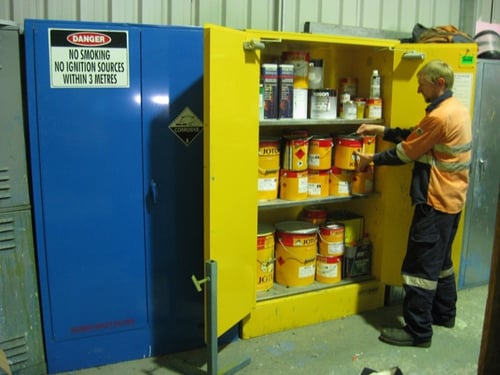Handling and storing flammable liquids is a daily task for many businesses across Western Australia. However, with the potential for ignition, explosion and hazardous vapour emissions, it’s important that these substances are handled and stored in a way that reduces risk. In this blog, we’ll be looking at Western Australia’s OHS compliance requirements for Class 3 Flammable Liquids. Whether you’re a business owner, operator or HSE Manager, this blog has been specifically written to help you achieve dangerous goods compliance.
IMPORTANT: The modernisation of Work Health and Safety Laws in Western Australia has commenced, with the WHS Act receiving assent in November 2020. However, the regulations have yet to be approved. Minister Stephen Dawson MLC has recently stated that the new WHS laws will bring WA workplaces under a harmonised WHS Act this year.
Work Health and Safety Regulation In WA
Work health and safety laws in Western Australia are administered and enforced by WorkSafe WA, a division of the Department of Mines, Industry Regulation and Safety. Soon, the laws in Western Australia will follow the harmonised WHS model that has already been adopted by most states and territories in Australia.

WorkSafe WA is responsible for the administering and enforcement of work health and safety laws within Western Australian workplaces.
For now, businesses who are carrying Class 3 Flammable Liquids (or any type of dangerous goods) should refer to the following pieces of legislation to determine their compliance duties. These are:
- Occupational Safety and Health Act 1984
- Occupational Safety and Health Regulations 1996
The state legislation sets out the duties of a business owner or operator to provide a safe workplace. It also provides information about the identification and control of chemical hazards.
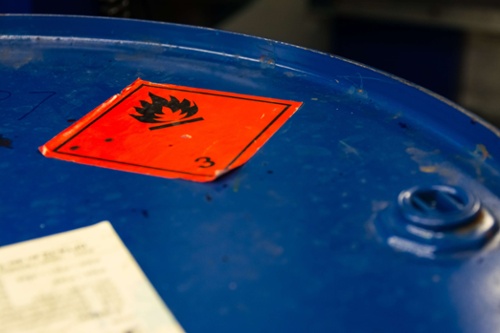
Controlling chemical hazards associated with Class 3 Flammable Liquids is your legal responsibility.
Some key responsibilities that relate to Class 3 Flammable Liquids include:
- Risk Assessment: Assessing the risks of exposure to chemicals and creating formal assessment reports to outline the severity of the risk, and the actions that have been taken to either eliminate or control them. These reports must be updated at least once every 5 years and be available during WorkSafe Inspections.
- Training: Specific requirements for inducting and training anyone likely to exposed to hazardous substances during the course of their work or when visiting the site.
- Monitoring: Ongoing monitoring of risks associated with hazardous substances and sharing the results with the workers and contractors who are actually handling (or working near) the chemicals.
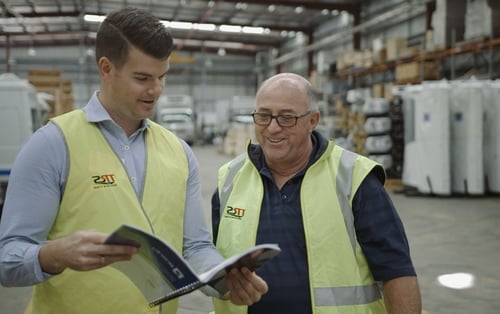
Risk assessments, training and monitoring of flammable liquid risks is the responsibility of any WA workplace that carries Class 3 liquids.
Dangerous Goods
WA worksites that use and store Class 3 Flammable Liquids also have additional obligations under Dangerous Goods legislation.
When a workplace carries any type of flammable liquid, there are additional compliance obligations.
In Western Australia, Dangerous goods are regulated by the Department of Mines, Industry Regulation and Safety (Dangerous Goods branch).
Legislation includes:
- Dangerous Goods Safety Act 2004 — outlining the duty of all persons who are involved in storing, handling or transporting dangerous goods to take all reasonable measures to minimise the risk to people, property and the environment from the goods. Fines start at $50,000 for non-compliance.
- Dangerous Goods Safety (Storage and Handling of Non-explosives) Regulations 2007 — outlining duties relating to chemical spills, segregation, licensing a dangerous goods site, placarding, manifest and Dangerous Goods site plan, fire control equipment, impact protection for Dangerous Goods stores, underground petroleum and fuel storage, ventilation, record keeping and emergency planning.
- Dangerous Goods Safety (Major Hazard Facilities) Regulations 2007 - assessing and controlling risks of Dangerous Goods at workplaces classed as major hazard facilities. This includes quantity thresholds and safety reporting.
Approved Guidance Materials
WorkSafe WA has a range of approved Codes of Practice and guidance materials to assist workplaces in managing and controlling the risks associated with flammable liquids. These materials are highly detailed and easily applied to any type of workplace that carries dangerous goods.
We suggest familiarising yourself with the following Codes of Practice and Guidance Materials to assist with safety in your flammable liquids and dangerous goods operations.
Approved Codes of Practice
- Control of Workplace Hazardous Substances - duty to carry out chemical risk assessments and implement ongoing chemical controls.
- First aid, Workplace Amenities, Personal Protective Clothing - duties to provide first aid equipment, safe showers, eyewash units and PPE for workers using flammable liquids.
- Labelling of Workplace Substances - ensuring fuels, solvents, paints and other flammable liquids are correctly labelled.
- Spray painting - fire safety when using flammable paints and solvents.
- Assessment of Health Risks Arising from Hazardous Substances - duty to assess chemical exposure risks to your workers and contractors.
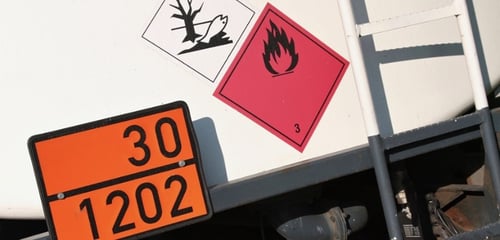
Refer to the individual Codes of Practice to learn more about specific issues including chemical labelling, heath risks and first aid requirements.
Guidance Materials
- Empty drums - potential bombs - safely disposing of empty fuel drums.
- Local exhaust ventilation - managing vapours from fuels and solvents.
- Agricultural safety and health workbook - fire and chemical safety, Dangerous Goods storage on farms and agricultural sites.
- Provision of information on hazardous substances at workplaces Material Safety Data Sheets (MSDS) - duty to obtain MSDSs and use them for HAZCHEM registers, risk assessments, training, and health surveillance.
- Dangerous Goods Safety Guidance Note: Manifest and site plan requirements for dangerous goods sites - details how to set out a manifest and site plan and fulfil duties under the DG Regulations.
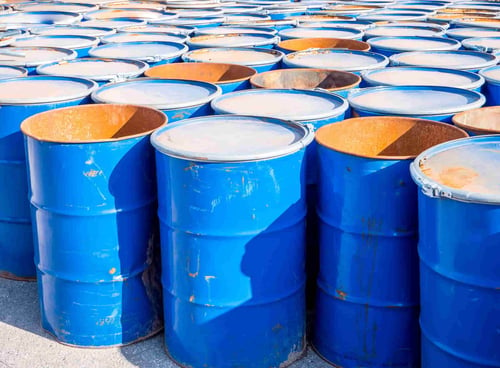
There are a broad range of guidance materials that can be helpful for businesses who handle or store flammable liquids.
Applying Australian Safety Standards
To fulfil all your dangerous goods compliance obligations in the state of Western Australia, we also recommend referring to the Australian Safety Standards.
The Australian Standard AS 1940:2017 – The storage and handling of flammable and combustible liquids should form the foundation of your site’s handling and storage practices.
As a practical guide to storage and handling of dangerous goods, the Australian Standards offer technical specifications as well as detailed guidance on a wide range of topics.
You should refer to AS 1940:2017 for specific information on:
- Purchasing and installing flammable liquids cabinets and stores
- Creating firewalls and vapour barriers
- Understanding and managing ignition sources
- Manifest and aggregate quantities
- Containing and managing chemical leaks and spills
- Transferring and decanting chemicals
- Training your workers and contractors
- Introducing safe operating procedures
- Developing housekeeping standards and procedures
For workplaces that are carrying Class 3 Flammable Liquids, following the guidance of the Australian Standards is a simple and straightforward way of maintaining chemical compliance. Issues covered include risk identification, engineering and administrative controls, and the ongoing inspection and maintenance of chemical controls.
Chemical Compliance In Western Australia
To achieve and maintain health and safety in the workplace, it’s important to understand your compliance obligations. It’s also helpful to know the available resources which can specifically help you choose, implement and maintain your chemical risk control measures. Even if your WA workplace is storing smaller quantities of Class 3 Flammable Liquids, you should consider using a compliant safety cabinet that’s manufactured to meet the requirements of the Australian Standards. Flammable cabinets are one of the simplest and most effective ways to reduce the risk of fires, explosions, hazardous vapours and chemical spills.
If you’d like to find out more about improving your workplace safety and meeting your compliance obligations, we have an eBook that can help. Essential Considerations When Storing Flammable Liquids Indoors offers expert advice on engineering controls that can help you meet your chemical compliance obligations — not only in Western Australia, but across every state and territory in Australia. Grab your copy for free today by simply clicking on the image below.
Joining the team as a Dangerous Goods Storage Consultant, Melissa Hampton became Storemasta's Marketing Manager in late 2021. With extensive knowledge and experience in chemical compliance, Melissa is responsible for leading the Marketing team and helping shape their marketing strategy. In her spare time, you can find Melissa hiking, swimming and enjoying the great outdoors in beautiful north-west Tasmania.
